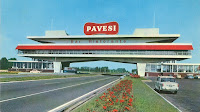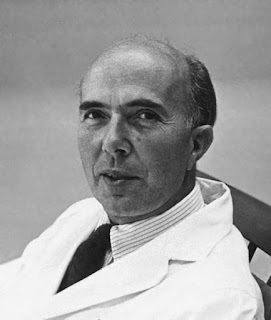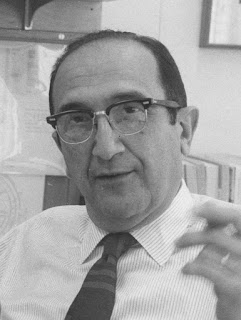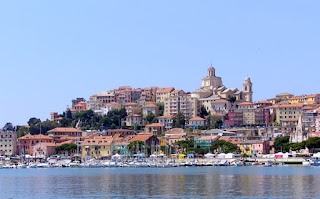The Socialist who broke the grip of the Christian Democrats
 |
Bettino Craxi was the first socialist prime
minister of Italy in the modern era |
Bettino Craxi, the politician who in 1983 became the first member of the Italian Socialist Party (PSI) to be appointed prime minister, was born on this day in 1934 in Milan.
He was not the first socialist to hold the office -
Ivanoe Bonomi had been prime minister for six months in 1920 on an Italian Reformist Socialist Party ticket and succeeded
Marshal Pietro Badoglio as leader of the war-torn nation’s post-Mussolini government in 1944. However, Craxi broke the hold of the
Christian Democrats, who had been in power continuously since the first postwar elections in 1946.
Craxi was a moderniser who moved his party away from traditional forms of socialism in a way that was replicated elsewhere in Europe, such as in Britain under the New Labour prime minister
Tony Blair. Craxi replaced the party’s hammer-and-sickle symbol with a red carnation.
His reputation was ultimately wrecked by a corruption scandal, but during his tenure as prime minister, Italy became the fifth largest industrial nation and gained entry into the G7 Group.
His fiscal policies saw him clash with the powerful trade unions over the abolition of the wage-price escalator under which workers’ wages rose automatically in line with inflation, scoring a major victory when a referendum on the issue called by the Italian Communist Party went in his favour. However, as a result of Craxi’s overall spending policies, Italy’s national debt overtook its gross domestic product.
 |
Craxi with the US president Ronald Reagan, with whom he
clashed over the hijacking of the Achille Lauro cruise ship |
Craxi demonstrated his strength again in a dispute with the United States following the hijacking off the Egyptian coast of the
Achille Lauro cruise ship by members of the Palestine Liberation Army in 1983, during which an American citizen, Leon Klinghoffer, was killed. President Ronald Reagan wanted the four perpetrators to be extradited to the US but Italy wished to preserve its good diplomatic relations with the Arab world and avoid becoming a terrorist target, so Craxi refused, insisting that the hijackers should come under Italian jurisdiction. His firmness earned him a standing ovation in the Italian Senate, even from his Communist opponents.
Craxi, who formed a new coalition in 1986 after his 1983 government collapsed, resigned in early 1987. In 1993, following the
mani puliti investigations, multiple charges of political corruption against him forced Craxi to quit as party leader.
He did not deny that he had solicited funding for the Socialist Party illegally but claimed that all the political parties did the same and that the PSI were being targeted for political reasons. Craxi fled to exile in Tunisia later that year, just before being convicted, and never returned. He died there in 2000.
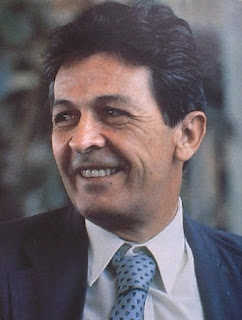 |
Craxi opposed the 'historic compromise' with
the Communists of Enrico Berlinguer (above) |
Craxi - who was christened Benedetto - owed his political beliefs to his father, Vittorio, an anti-Fascist lawyer from Sicily, who became vice-prefect for Milan and then prefect for Como and stood in the 1948 national elections for the Popular Democratic Front, a political alliance between Socialists and Communists. Bettino campaigned for his father and later joined the Italian Socialist Party at the age of 17.
After being elected a town councillor in
Sant'Angelo Lodigiano - his mother’s birthplace - in 1956, he became a member of the PSI’s central committee in 1957, won a seat on the city council of Milan in 1960 and was elected to the Chamber of Deputies in 1968.
In 1970 he was appointed the party’s deputy secretary. He was a strong supporter of the centre-left coalition between the Christian Democrats of
Aldo Moro and
Amintore Fanfani, the PSI, then led by
Pietro Nenni, the Social Democrats the Republicans.
He was elevated to general secretary in 1976 following a poor election performance by PSI candidates and set about uniting the party’s squabbling factions, committed it to moderate social and economic policies, and tried to dissociate it from the much larger Italian Communist Party.
Craxi always opposed the mooted
'historic compromise' favoured by Moro and the Communist leader,
Enrico Berlinguer, on the basis that a political alliance between the Christian Democrats and the Communists would marginalise the Socialists, yet when Moro was
kidnapped by the Red Brigades in 1978, amid demands for the release of so-called political prisoners, Craxi was the only political leader to declare himself open to a "humanitarian solution" that would allow Moro to be freed.
Under Craxi’s leadership the Socialists were members in five of Italy’s six coalition governments from 1980 to 1983 before the 1983 elections gave him the opportunity to form a coalition government with the Christian Democrats and several small, moderate parties.
His tenure as prime minister lasted three years and seven months, the third longest in the republican era.
Silvio Berlusconi, with whom he enjoyed a close friendship despite their political differences, is the only prime minister to enjoy longer unbroken spells in office.
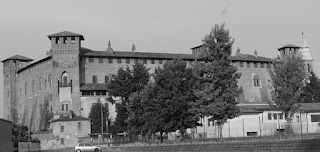 |
The Castello di Sant'Angelo Lodigiano is now a museum
set up in honour of the Bolognini family |
Travel tip:
The town of
Sant’Angelo Lodigiano, where Bettino Craxi served as a councillor in the 1950s, is situated about 40km (25 miles) southeast of Milan, close to the city of Lodi in Lombardy. It is best known for the castle that was built there in the 13th century, standing guard over the river Lambro in a strategically favourable position for the control of river traffic to Milan. The castle was turned into a summer residence by Regina della Scala, wife of Bernabò Visconti. In 1452, with the passage of the power of the Duchy of Milan from the Visconti to the Sforza, the fiefdom and the castle were donated, by Francesco Sforza, to Michele Matteo Bolognini, who received the title of Count. It remained the property of the Bolognini family and became known as the Castello Bolognini until 1933, when the widow of the last descendant - Count Gian Giacomo Morando Bolognini - created the Fondazione Morando Bolognini for agricultural research and turned the castle into a museum.
Hotels in Sant'Angelo Lodigiano by Booking.com
 |
Lodi's beautiful main square, the Piazza della Vittoria.
looking towards the 12th century cathedral |
Travel tip:
The city of
Lodi sits on the right bank of the River Adda. The main square, Piazza della Vittoria, has been listed by the Touring Club of Italy as among the most beautiful squares in Italy with its porticoes on all four sides. Its cathedral, the Basilica Cattedrale della Vergine Assunta, was founded on August 3, 1158, the day on which Lodi was refounded after its destruction by Milanese troops in 1111. The façade, built in Romanesque style with the exception of the large Gothic entrance portico supported by small columns with lion sculptures at the base, was completed in 1284.
(Picture credits: Castle Sant’Angelo Lodigiano by Paperkat; Piazza della Vittoria, Lodi by Gabriele Zuffetti; via Wikmedia Commons)













